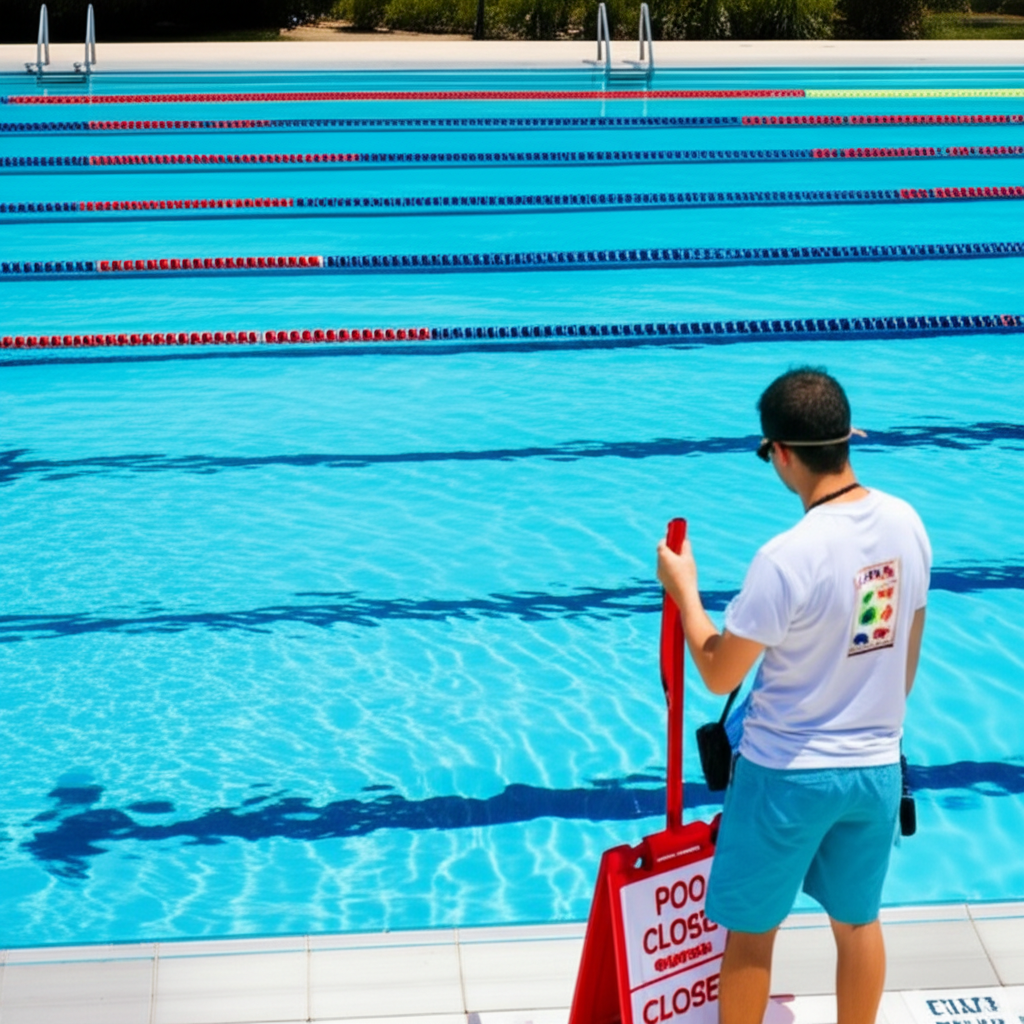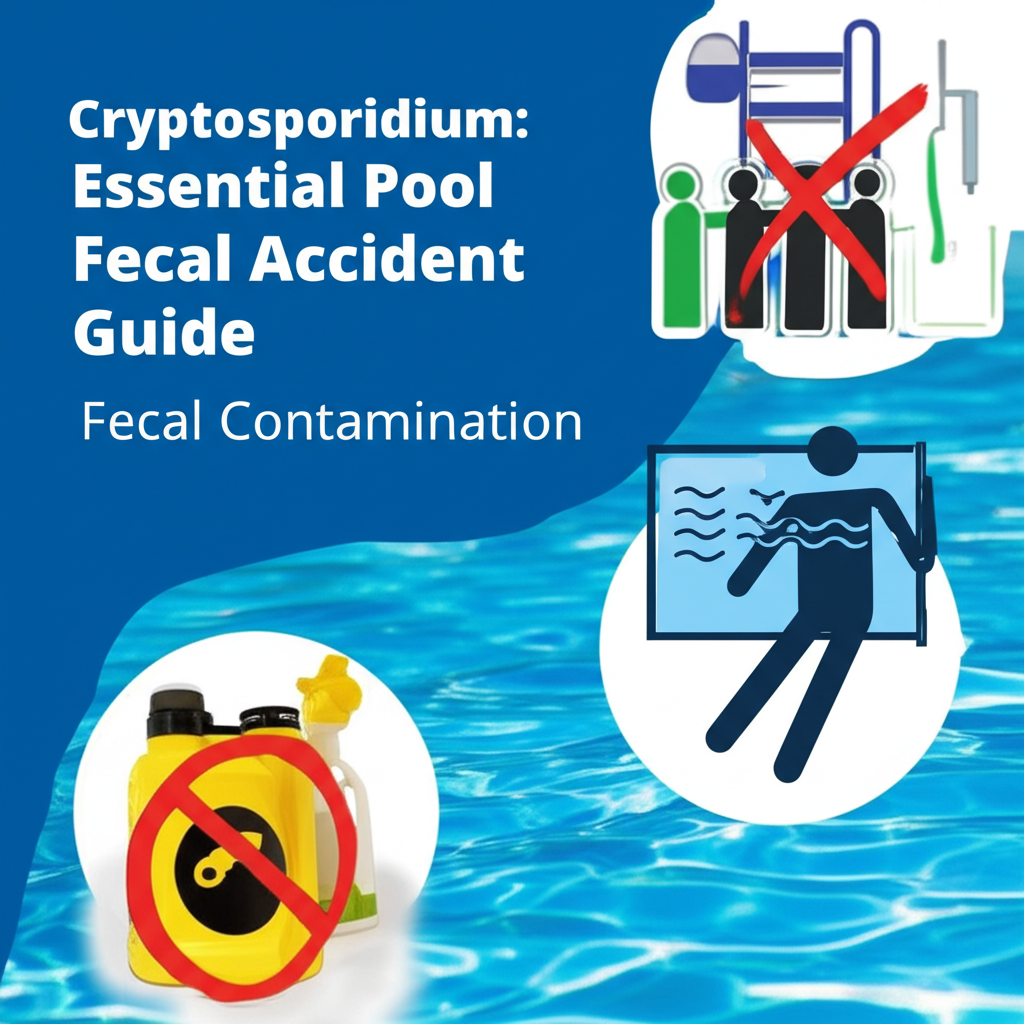- The Unseen Threat: What is Cryptosporidium?
- Understanding the Risk of Fecal Contamination
- Responding to a Pool Fecal Accident
- Immediate Actions:
- Disinfection Protocol Targeting Cryptosporidium
- For Formed Stool (Less Concern for Cryptosporidium):
- For Diarrheal Stool or Suspected Cryptosporidium Contamination (High Concern):
- Prevention is Key: Minimizing Cryptosporidium Risk
Cryptosporidium: A microscopic parasite that causes the diarrheal disease cryptosporidiosis, poses a significant, often underestimated, threat to public swimming pools. Its notorious resilience to chlorine, the standard disinfectant for pools, makes it a formidable adversary, particularly in the event of fecal contamination. Understanding how to prevent, identify, and meticulously respond to such incidents is paramount for pool operators and users alike to ensure a safe and healthy aquatic environment.
The Unseen Threat: What is Cryptosporidium?
Cryptosporidium is a protozoan parasite found in the feces of infected humans and animals. When infected individuals swim, or if a fecal accident occurs, these parasites can be released into the water. Unlike most bacteria and viruses, Cryptosporidium is encased in an outer shell, known as an oocyst, which makes it highly resistant to chlorine disinfection. This means typical chlorine levels maintained in pools are often insufficient to kill the parasite promptly, allowing it to persist in the water for days or even weeks. Ingesting even a small number of these oocysts can lead to cryptosporidiosis, characterized by watery diarrhea, stomach cramps, nausea, vomiting, and dehydration. Though often self-limiting, the illness can be severe and prolonged, especially in young children, pregnant women, and individuals with weakened immune systems.
Understanding the Risk of Fecal Contamination
The primary route of Cryptosporidium spread in pools is through fecal contamination. This can happen in several ways:
1. Accidental Release: Vomit or stool can be released directly into the pool, especially by young children or individuals suffering from gastrointestinal illness.
2. Rinse-Off: Even microscopic amounts of fecal matter can wash off a swimmer’s body if they don’t shower before entering the pool.
3. Diarrheal Incidents: A swimmer experiencing diarrhea, especially if unaware of their infection status, presents the highest risk. A single diarrheal incident can rapidly contaminate an entire pool with millions of chlorine-resistant Cryptosporidium oocysts.
Due to the parasite’s low infectious dose and chlorine resistance, a swift and correct response to any fecal accident is crucial to prevent widespread outbreaks. The type of stool (formed vs. diarrheal) dictates the severity of the response needed.
Responding to a Pool Fecal Accident
Immediately addressing a fecal accident is critical. The Centers for Disease Control and Prevention (CDC) provides clear guidelines for pool operators, emphasizing that the response must be proportional to the risk.
Immediate Actions:
1. Clear the Pool: Immediately direct all swimmers to exit the pool.
2. Remove Waste: Carefully remove the fecal matter using a scoop or net. Do not vacuum the waste; this can disperse contaminants. Dispose of the waste in a sanitary manner (e.g., flush down a toilet or dispose of in a sealed bag). Do not allow anyone to swim near the contaminated water.
3. Clean and Disinfect: Clean any visible fecal matter from the scoop or net and disinfect it.
Disinfection Protocol Targeting Cryptosporidium
The next steps depend on the nature of the fecal accident.
For Formed Stool (Less Concern for Cryptosporidium):
While formed stool generally carries a lower risk for Cryptosporidium than diarrheal stool, proper disinfection is still essential for other pathogens.
Adjust pH: Ensure the pool water pH is between 7.2 and 7.8.
Raise Chlorine Levels: Increase the free chlorine concentration to at least 2 ppm (parts per million).
Circulate and Filter: Continuously operate the filtration system for at least 30 minutes.
Confirm: Verify the free chlorine and pH are at the correct levels before reopening the pool.
For Diarrheal Stool or Suspected Cryptosporidium Contamination (High Concern):
This scenario demands a stringent hyperchlorination protocol to destroy Cryptosporidium oocysts. This is where the chlorine resistance of Cryptosporidium becomes a major factor, requiring significantly higher chlorine levels and prolonged contact times.
1. Hyperchlorination: The goal is to achieve specific CT (Concentration x Time) values for Cryptosporidium inactivation. The CDC recommends:
Maintain free chlorine at 20 ppm (parts per million).
Maintain pH between 7.2 and 7.5.
Maintain water temperature at or above 77°F (25°C).
Hold these conditions for at least 12.75 hours (minimum contact time). This entire period requires continuous filtration and circulation.
2. Monitor and Maintain: Throughout the hyperchlorination period, regularly monitor and adjust chlorine and pH levels to ensure they remain within the target ranges.
3. Backwash and Clean: After the hyperchlorination period, backwash the filter thoroughly. If using a sand filter, consider replacing the sand. Clean any skimmer baskets, gutters, and surfaces that may have come into contact with the contaminated water.
4. Restore Normal Chemistry: Lower the free chlorine level to its normal operating range (typically 1-3 ppm for public pools) and restore the pH to 7.4-7.6 before reopening the pool. This typically involves reducing the chlorine through dilution or using a chlorine neutralizer, followed by re-balancing the water chemistry.
5. Record Keeping: Document the incident, including the date, time, type of accident, observed conditions, and the disinfection steps taken.
Prevention is Key: Minimizing Cryptosporidium Risk
While effective response protocols are vital, preventing fecal contamination is the first and best line of defense against Cryptosporidium.
Swimmer Hygiene:
Shower Before Swimming: Encourage all swimmers to shower with soap and water before entering the pool. This washes away most potential contaminants.
Do Not Swim When Sick: Emphasize that individuals with diarrhea or other gastrointestinal symptoms should not enter the pool. They should wait at least two weeks after symptoms subside.
Parental Responsibility:
Regular Bathroom Breaks: Take young children to the bathroom frequently throughout their swim.
Check Swim Diapers: Ensure infants and toddlers wear snug-fitting swim diapers or swim pants, and check them frequently (every 30-60 minutes). Changing diapers should always be done in a designated changing area, not poolside.
Pool Operator Vigilance:
Maintain Proper Chemistry: Routinely monitor and adjust water chemistry (chlorine, pH, alkalinity, cyanuric acid) to ensure optimal disinfection.
Staff Training: Train pool staff to respond quickly and correctly to fecal incidents.
Regular Visual Checks: Perform frequent visual checks of the pool water and surrounding areas for any signs of contamination.
Public Education: Post clear signage reminding swimmers about healthy swimming behaviors.
By adhering to these rigorous guidelines for both prevention and response, pool operators can significantly reduce the risk of Cryptosporidium* outbreaks, safeguarding the health of all swimmers and ensuring that swimming remains a safe and enjoyable activity. Swimmers, too, play a crucial role by practicing good hygiene and respecting pool rules, becoming active partners in maintaining public health.




